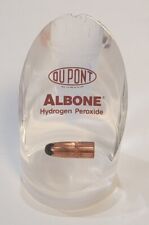
Cars that run on hydrogen rather than gasoline are closer to becoming a reality, as researchers at UCLA and the University of Michigan show how significant amounts of hydrogen fuel can be stored efficiently in a remarkable new material. The ground-breaking new study, set to be published in the Journal of the American Chemical Society, also indicates that electronic devices like laptops and cellular phones could also make use of the new hydrogen storage method.
One of the primary obstacles in developing practical hydrogen cells to power cars and other devices has been the difficulty of storing and transporting large volumes of hydrogen at a temperature and pressure that was both safe and efficient. “The challenge has been, how do you store enough hydrogen for an automobile to run for 300 to 400 miles without refueling?” asked UCLA professor of chemistry Omar Yaghi. “You have to concentrate the hydrogen into a small volume without using high pressure or very low temperature.”
The United States Department of Energy (DOE) states that hydrogen powered cars must achieve concentrations of at least 6.5 percent to be viable. In their study, Yaghi’s team has already achieved an impressive concentration of 7.5 percent.
The key component of the team’s success is a relatively new set of materials called metal-organic frameworks (MOFs), which dramatically maximize the storage surface area available. Incredibly, one gram of a MOF has the surface area of a football field. “We have a class of materials in which we can change the components nearly at will,” said Yaghi, who conducted the research with colleagues at the University of Michigan. “There is no other class of materials where one can do that. The exciting discovery we are reporting is that, using a new material, we have identified a clear path for how to get above seven percent of the material’s weight in hydrogen.”
It was Yaghi who was responsible for the invention of the scaffold like MOF structures in the early 1990s. Often described as a highly porous crystal sponge, MOFs are comprised of a multitude of nanoscale pores that make them perfect for storing high concentrations of gases. “We can store significantly more hydrogen with the MOF material than without the MOF,” says Yaghi.
The malleable characteristics of MOFs also mean that they can be manipulated to conform to any number of structures and applications, and so far Yaghi’s laboratory has made more than 500 different MOFs. “MOFs will have many applications. Molecules can go in and out of them unobstructed. We can make polymers inside the pores with well-defined and predictable properties. There is no limit to what structures we can get, and thus no limit to the applications,” explained Yaghi.
There’s some way to go yet before MOFs can be used to produce hydrogen power cells for cars, laptops and cell phones, but Yaghi pictures a rosy future. “A decade ago, people thought methane would be impossible to store; that problem has been largely solved by our MOF materials. We have materials that exceed the DOE requirements for methane, and we think we can apply the same sort of strategy for hydrogen storage,” he said.
Another advantage is that MOFs can be made from cheap and readily available materials, such as zinc oxide and terephthalate (used in sunscreen and plastic bottles respectively). Yaghi says that MOFs can also store vast quantities of carbon dioxide, so they may also have application in mopping up CO2 emissions from industry and car exhausts.


















Comments are closed.